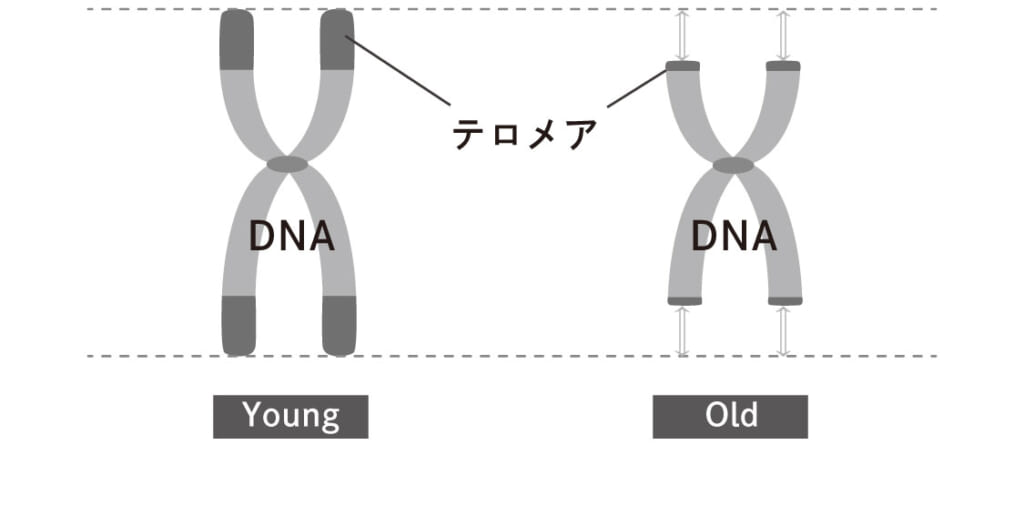
Every living organism records its genetic information in DNA and ensures the proliferation of its descendants by accurately replicating DNA, thus preserving its identity. As individual organisms, through processes such as growth, DNA is continuously replicated with precision, enabling cells to function normally. In the case of humans, important genetic information is stored in a structure called a chromosome, which is a complex of DNA with proteins. Humans have a total of 46 chromosomes, 23 from each parent. At the ends of chromosomes, particularly vulnerable to damage, are the telomeres.

Telomeres protect the ends of chromosomes and store important genetic information. However, due to issues with DNA replication mechanisms, the ends of telomeres are not replicated, causing them to gradually shorten with each cell division. It is known that when telomeres become too short, cells have difficulty dividing, and this is believed to be related to aging-related diseases. As individuals age and their cells undergo repeated divisions, many cells have shortened telomeres. Therefore, telomere length is considered one of the indicators of aging.

Telomere shortening is not only due to aging (repeated cell divisions) but is also influenced by lifestyle habits. Factors such as obesity, lack of exercise, stress, and smoking have been reported to accelerate telomere shortening. This means that these lifestyle habits are contributing factors to the aging process. Therefore, by reassessing lifestyle habits and focusing on balanced nutrition, moderate exercise, quality sleep, and stress management, it may be possible to maintain telomere length.
We explained that telomeres shorten as cells divide, but cells also have a mechanism called telomerase that can extend telomeres. There are reported cases, based on studies involving humans and mice, where NMN intake has been associated with the extension of telomeres.
In a human study, participants aged 45 to 60 took 300 mg of NMN per day for 90 days after breakfast. As a result, after 30 days, there was a tendency for telomeres to be longer than before NMN intake, and after 90 days, telomeres were significantly longer than before NMN intake. This report suggests the possibility of NMN intake extending telomeres.
So, how can telomere length be measured?
Our company has been advancing research in collaboration with Tokyo Ginza Wellness & Aging Clinic. As a result, we have established a method to measure telomere length (Press Release: Press Release). It is common to visit clinics that offer telomere length measurement tests and request a blood test.
On the other hand, our company has developed a convenient kit for measuring telomere length called the “Chromosomal Aging Analysis Kit <Telomere Check>.” With this Telomere Check, you can measure telomere length by simply collecting saliva and sending it by mail. Our company has previously sold the MiRMes (Mirailab Remote Medical Check Series) for health analysis, including the “Mitochondrial Quantity Measurement Kit <Energy Check>” and “AI Disease Prediction Kit <Risk Check>.” The Telomere Check is our third product in the MiRMes series (Sales Site: Sales Site).
We recommend everyone to consider measuring telomere length for themselves and their families using this convenient test that only requires saliva collection and mailing. It is also recommended to investigate the effects of NMN supplementation and lifestyle changes on telomere length.
References:
※1: https://pubmed.ncbi.nlm.nih.gov/22661914/
※2: https://pubmed.ncbi.nlm.nih.gov/21102320/
※3: https://pubmed.ncbi.nlm.nih.gov/34912838/

